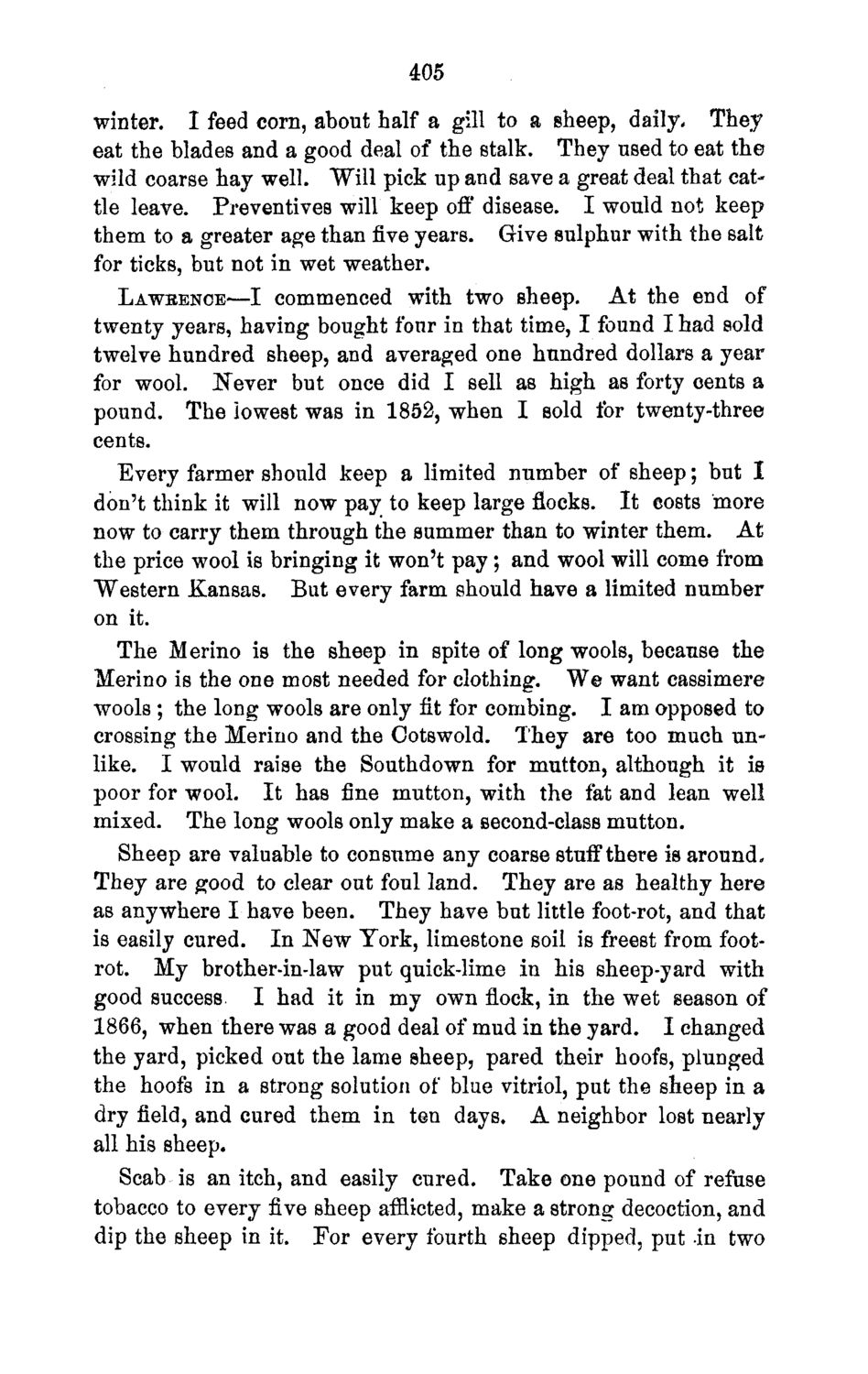| |
| |
Caption: Board of Trustees Minutes - 1870
This is a reduced-resolution page image for fast online browsing.

EXTRACTED TEXT FROM PAGE:
405 winter. I feed corn, about half a gill to a sheep, daily. They eat the blades and a good deal of the stalk. They used to eat the wild coarse hay well. Will pick up and save a great deal that cattle leave. Preventives will keep off* disease. I would not keep them to a greater age than five years. Give sulphur with the salt for ticks, but not in wet weather. LAWBENCE—I commenced with two sheep. At the end of twenty years, having bought four in that time, I found I had sold twelve hundred sheep, and averaged one hundred dollars a year for wool. Never but once did I sell as high as forty cents a pound. The lowest was in 1852, when I sold for twenty-three cents. Every farmer should keep a limited number of sheep; but I don't think it will now pay to keep large flocks. It costs more now to carry them through the summer than to winter them. At the price wool is bringing it won't pay; and wool will come from Western Kansas. But every farm should have a limited number on it. The Merino is the sheep in spite of long wools, because the Merino is the one most needed for clothing. We want cassimere wools ; the long wools are only fit for combing. I am opposed to crossing the Merino and the Ootswold. They are too much unlike. I would raise the Southdown for mutton, although it is poor for wool. It has fine mutton, with the fat and lean well mixed. The long wools only make a second-class mutton. Sheep are valuable to consume any coarse stuif there is around. They are good to clear out foul land. They are as healthy here as anywhere I have been. They have but little foot-rot, and that is easily cured. In New York, limestone soil is freest from footrot. My brother-in-law put quick-lime in his sheep-yard with good success. I had it in my own flock, in the wet season of 1866, when there was a good deal of mud in the yard. I changed the yard, picked out the lame sheep, pared their hoofs, plunged the hoofs in a strong solution of blue vitriol, put the sheep in a dry field, and cured them in ten days. A neighbor lost nearly all his sheep. Scab is an itch, and easily cured. Take one pound of refuse tobacco to every five sheep afflicted, make a strong decoction, and dip the sheep in it. For every fourth sheep dipped, put in two
| |